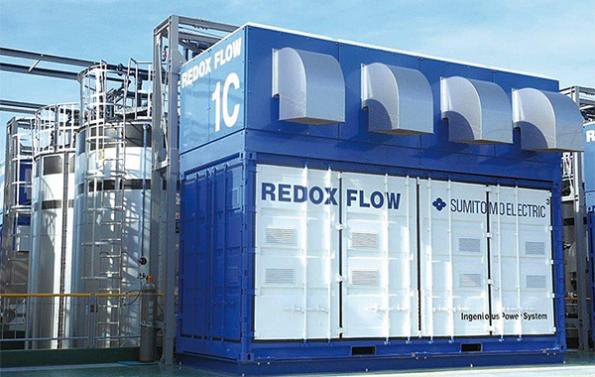TNG Ltd. – which owns the world’s most advanced vanadium project, Mount Peake Vanadium-Titanium-Iron Project (Mount Peake Project), 230 kilometers north of Alice Springs in Australia's Northern Territory – has established a new vanadium redox flow battery (VRFB) business, as it looks to rapidly expand its presence in the green energy sector.
The Mount Peake Project is an enormous deposit of titanium dioxide pigment and iron ore fines products. But most importantly, it has high-purity vanadium pentoxide, one of the world’s great potential electrolytes and a key ingredient in VRFBs.
TNG’s new green-focused subsidiary, TNG Energy, has been established to develop its VRFBs for applications that reduce greenhouse emissions and provide economic alternatives to traditional sources of energy for off-grid sites. These include mines, farms, and remote indigenous communities, where storage can work in tandem with wind and solar to provide a continuous source of renewable energy.
Of course, vanadium is most widely used as a steel strengthener, and has been used as such for well over a century. Ford Motor used vanadium steel to toughen up its Model T after Henry Ford observed European racing cars employing the mineral, for example.

Recent years have seen the price of vanadium skyrocket, and this trend looks to continue. This is due to the fact that the Chinese government has set high standards for the strength of steel in construction, driving up vanadium demand. However, it is vanadium’s utility in energy storage which could prove a real game-changer, especially for off-grid solutions.
“The VRFB market represents an exciting opportunity for the Company to further expand into the green energy sector, and diversify the Mount Peake product portfolio with the future production of high-purity vanadium electrolyte,” said TNG’s managing director and CEO, Paul Burton.
Remote sites
While VRFBs have a lower energy density than lithium-ion batteries, they can be easily scaled up to large sizes that can hold even more energy. This makes them ideal for remote off-grid sites, because they can store up energy for several days if they’re big enough.
VRFBs are also hardy batteries – they can be shoved in any old place and left to do their job for extended periods of time, as they require little maintenance. This is another plus when it comes to energy storage at remote mine sites.
There is also great potential for VRFBs as a hybridized solution with lithium-ion batteries. This is particularly apparent in the electric vehicle (EV) industry, as VRFBs are too large to be efficiently utilized in the space of an EV by itself.
However, as Victoria’s Monash University is demonstrating with the nation’s largest behind-the-meter hybrid battery storage system – combining a 180kW/900kWh vanadium redox flow battery system and a 120kW/120kWh C1-rated lithium-ion battery. As U.K. vanadium flow battery manufacturer RedT explained after it installed the system in 2018, the vanadium-flow “workhorse” provides around 80% of the energy and has the ability to store energy for more than four hours, while the lithium-ion batteries provide bursts of power for demand surges. The lithium-ion battery, supplied by Germany’s Tesvolt, uses Samsung cells. It can store energy for one to two hours and will be used for occasional bursts of short demand spikes.
As for TNG Energy, the subsidiary has already partnered with SMS group for the production of green hydrogen energy. Burton said.
“The potential development of VRFBs using Mount Peake’s vanadium electrolyte, together with the recent agreement signed with SMS to develop a hydrogen production technology, marks another step towards realising our strategic vision of establishing TNG as a sustainable resources company and providing maximum benefit to our shareholders,” he explained.
This content is protected by copyright and may not be reused. If you want to cooperate with us and would like to reuse some of our content, please contact: editors@pv-magazine.com.




In terms of cost, system flexibility, quick response and safety concerns for large‐scale applications, redox flow batteries show great advantages